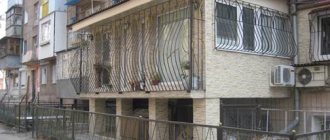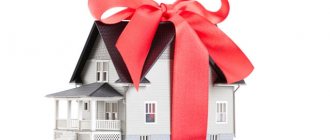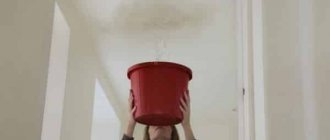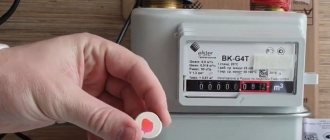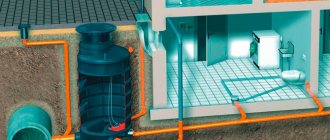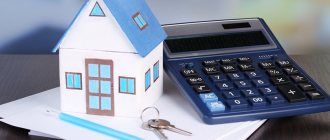A fresh look at the front door
A fresh look at the entrance, and especially at the ground floor, forms a strong opinion in people about those living in the house. Often our front doors are in such a depressing state that it is scary to enter them. We have to admit the fact that restoration work has not been carried out since the house was put into operation: door and window fragments are broken, steps are crumbling, walls are peeling, plaster is crumbling, wiring is hanging from the ceiling. This condition is not only depressing, but also raises fears that trouble could happen at any moment.
Given such a deplorable state of affairs, residents cannot help but have a natural desire to raise the issue of repairs. The first floor in the entrance is the most subject to negative changes. Many people pass here, taking out and bringing in furniture and building materials during apartment renovations. In this case, the plaster may break off, the paint may peel off, and a piece of the step may fly off.
According to the rules and regulations for the technical operation of the housing stock, the ideal condition of the entrance implies:
- Closely adjacent narthexes of windows and doors of staircases.
- Possibility of systematic ventilation.
- High-quality surfaces painted in a single color.
- Self-closing devices and travel limiters on doors.
- In the absence of self-closing mechanisms, use sealing gaskets.
In addition, it is unacceptable to place workshops, storerooms and other unprovided spaces under the stairs, as well as to clutter them. It is prohibited to block entrances to staircases and approaches to fire appliances. It is only allowed to arrange premises for centralized heating control points, water metering units, and electrical panels with fireproof partitions.
After a visual inspection of the front door (for which you can invite representatives of the management company and/or construction organization), a defect list is drawn up and the scope of activities is determined. A general meeting of residents is held to discuss the plan and costs of repair work. Having settled the organizational issues, they enter into an agreement for the provision of repair services for the first floor in the entrance, purchase the necessary materials and tools. All the details are discussed in advance: what color the surfaces will be, what to lay on the floor, what to cover the walls with.
"Warm floor" for floor insulation
Floor heating is used more and more every year. In addition to its main function, this system improves the indoor microclimate by reducing humidity levels and increasing temperature. What types of underfloor heating are there?
- Electric. Fits directly into the screed or onto the rough finish.
- Water. The working fluid is heated to the required temperature and supplied to the system.
- Infrared in the form of a film that is placed under the finishing coat.
On the question of how to insulate an apartment on the ground floor
, should be approached comprehensively. After all, problems can be hidden in other housing structures.
Do you need repairs?
We have already renovated more than 500 apartments, we will be happy to help you too
Find out the cost of repairs
Types of repairs
When inspecting the front door, it is immediately determined what repairs are needed: cosmetic , major or improved.
Planned cosmetic repairs are done on average once every 3-5 years, which depends on the timing specified in the charter documents of the HOA.
Cosmetic repair work includes:
- restore plaster;
- seal holes and cracks;
- whitewash the walls;
- paint railings and panels;
- glass window frames;
- replace broken and cracked glass;
- paint frames;
- renew the paint of elevator slopes;
- change mailboxes and combination locks;
- doors are trimmed and painted (if necessary, they are replaced).
Every 25 years a major overhaul is carried out, which includes:
- waterproofing replacement;
- insulation of joints between panels;
- replacement of communications;
- troubleshooting elevator problems;
- updating lighting (wiring, light sources);
- repair of the technical floor, ventilation, facade, basement;
- building insulation;
- internal cosmetic measures at the entrance.
Due to various circumstances, the list of works may be shortened or supplemented. Residents can also initiate unscheduled repair actions - if restoration of part of the house or entrance is required.
Materials and tools
Renovating the first floor of an apartment building involves the use of durable paints and durable materials. To protect the corners, special corners are used; the floor covering must be wear-resistant.
Minimum set of tools:
- Bulgarian;
- perforator;
- rollers and brushes;
- painting knife;
- spatulas;
- building level;
- roulette;
- crowbar (sledgehammer, chisel, hammer);
- drill;
- screwdriver;
- abrasive mesh;
- masking tape.
Materials that may be required:
- primer;
- paint (whitewash) removal solution;
- lime;
- putty;
- plaster;
- paint for walls and ceilings;
- glass wallpaper (as an option);
- tiles (linoleum, laminate);
- adhesive solution;
- electrical cable;
- polyethylene film;
- corners, profiles;
- crosses for tiles;
- sandpaper (skin);
- polyurethane foam.
In addition, you will need respirators, garbage bags, protective gloves and other equipment.
The purchase of tools and materials can be undertaken by the builders, or by residents, which will help save costs.
Stages of work
All residents must be notified of the start of repair activities. Doors and railings are covered with film to prevent contamination. Construction team specialists are required to place warning posters and boards in accessible places.
Before starting the renovation of the first floor, the old coatings are torn off, all surfaces are thoroughly washed from dirt - first the ceiling and walls, so that the compositions are properly applied to them. Using special compounds, cracks, crevices and potholes are covered, having previously expanded them using tools. First of all, the ceiling is tidied up. After all the necessary manipulations, it is painted, whitened or covered with foam plastic or polystyrene foam tiles.
Frames and doors are dismantled. If there are broken glasses, they are removed from the frames.
If you need to replace the cable, lay grooves in the walls where you can hide the wires. The wiring is changed by electricians who have permission to carry out such work. Electrical panels are painted, apartments are numbered, and lamps are installed.
The walls are sealed and sanded using power tools designed for this purpose. To ensure the durability of the finish, we try to purchase high-quality products.
After applying putty, the walls are painted. For convenience, purchase masking tape - a convenient and versatile thing with which you can protect baseboards, door and window slopes and other elements from paint, as well as determine the boundaries of the surface to be painted. On the ground floor, it is permissible to raise the level of painting higher to protect the walls from household pollution.
A smooth surface with a uniform structure, without old paint showing through, stains or smudges - this should be the ideal painting result.
As an option, the walls are sheathed with laminated panels, tiled or wallpapered. The materials must be durable - for example, fiberglass, which has a service life of up to 30 years. Fiberglass wallpaper can be repainted many times.
As a result of the renovation of the first floor in the apartment building, everyone entering the front door should have a favorable impression of the building as a whole. Bold design solutions will help achieve this - for example, artistic wall painting.
To protect corners and openings from rubbing, you can use metal corners. They are installed from floor to ceiling before finishing the walls and painting them. It is not recommended to use perforated corners, since there are often cases when, after the plaster has fallen off, these corners “peek out” unsightly from the wall.
Loose stair railings are strengthened and the flights of stairs are also painted. Heating pipes, grilles, mailboxes and other structures and communications are cleaned of paint layers and repainted. The same is done with the garbage chute (if available) and its parts.
Over many years of service, wooden window blocks are subject to deformation and become unusable. They will have to be changed. Depending on the wallet of the residents, they buy new wooden frames or metal-plastic double-glazed windows, and install new window sills.
When starting to repair doors, they study their condition - sometimes replacement is indispensable. When installing or restoring door frames and leaves, do not forget about stops and closers, as well as sealing gaskets to protect against cold.
For the restoration of floors, stable building mixtures are chosen, since loads on the floor surface of the first floor destroy the coating and cause the appearance of potholes, cracks and chips. After blowing them with a construction vacuum cleaner, the cracks are widened, cleaned of dirt and primed. The next step is filling them with the mixture and waiting for shrinkage to occur. After this, the next layer of the mixture is added, which is dried, and then the surface is sanded. The finishing touch is applying paint to the surface, tiling or laying laminate (linoleum). Before laying the tiles, make a leveling screed. Anti-slip porcelain stoneware is often used for cladding. The correct choice of coating guarantees the safety of people, especially in winter and wet weather. For steps, you can use anti-slip rubberized pads or mount metal profiles. In addition to their intended purpose, they even out imperfect angles, hide existing flaws, protect the entrance from mechanical damage, and trap dust and dirt.
After completing the internal work, they move on to the external work. The porch is being repaired, including concreting the steps, restoring handrails and canopies. The façade is painted after pre-treating the walls with liquid antifungal agents and repairing defects.
Other reasons for low temperature in the apartment
The cold can successfully penetrate from the street if the front door does not close tightly enough. A rubber seal will help. Before fixing it, you need to thoroughly clean the surface of old material, fasteners and dirt. Another option to solve the problem is to install an additional door. An air cushion is formed between the canvases to retain heat. But this is fraught with the accumulation of condensation and damage to the door material. If you want to get by with only one design, then here is the third way - to sheathe the door leaf with insulating material.
A similar situation exists with windows. It is possible that it will be necessary to either replace a worn seal or adjust the fittings (handles, hinges, which become loose over time and prevent the sash from closing normally). For these purposes, it is better to invite a master. If you initially did not contact the most conscientious window installation company, the result will be a poor-quality installation with voids and cracks from which there will be air. This can happen to an apartment on any floor.
Walls, like the floor, can also “accumulate” cold. To insulate them, you will need cork material, wool panels or sheets of plasterboard.
Important! New panel buildings shrink within two years, which leads to the appearance of cracks. Cold air also penetrates through them.
